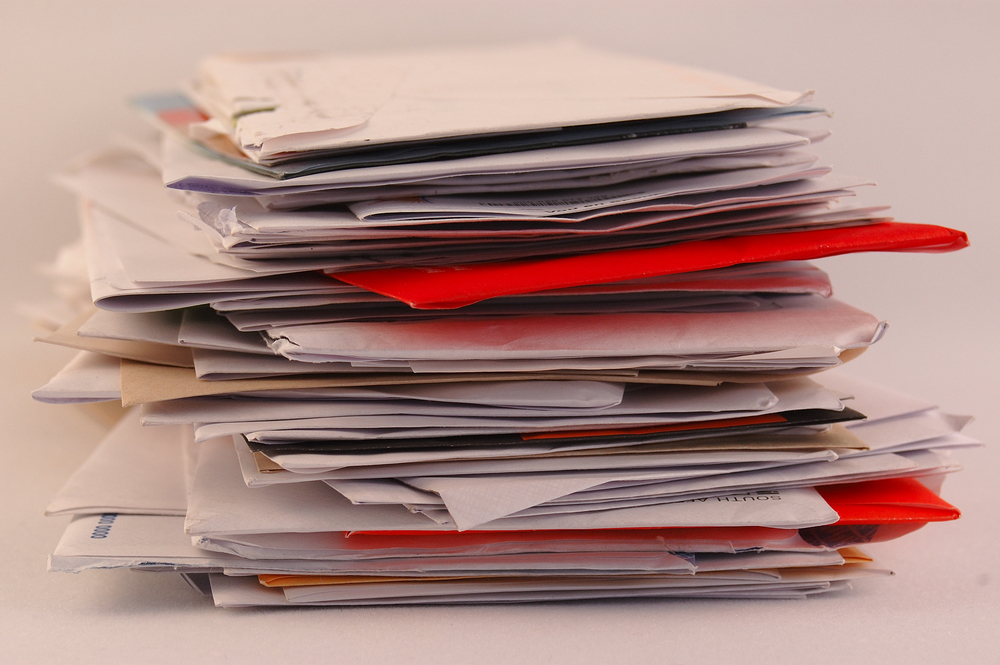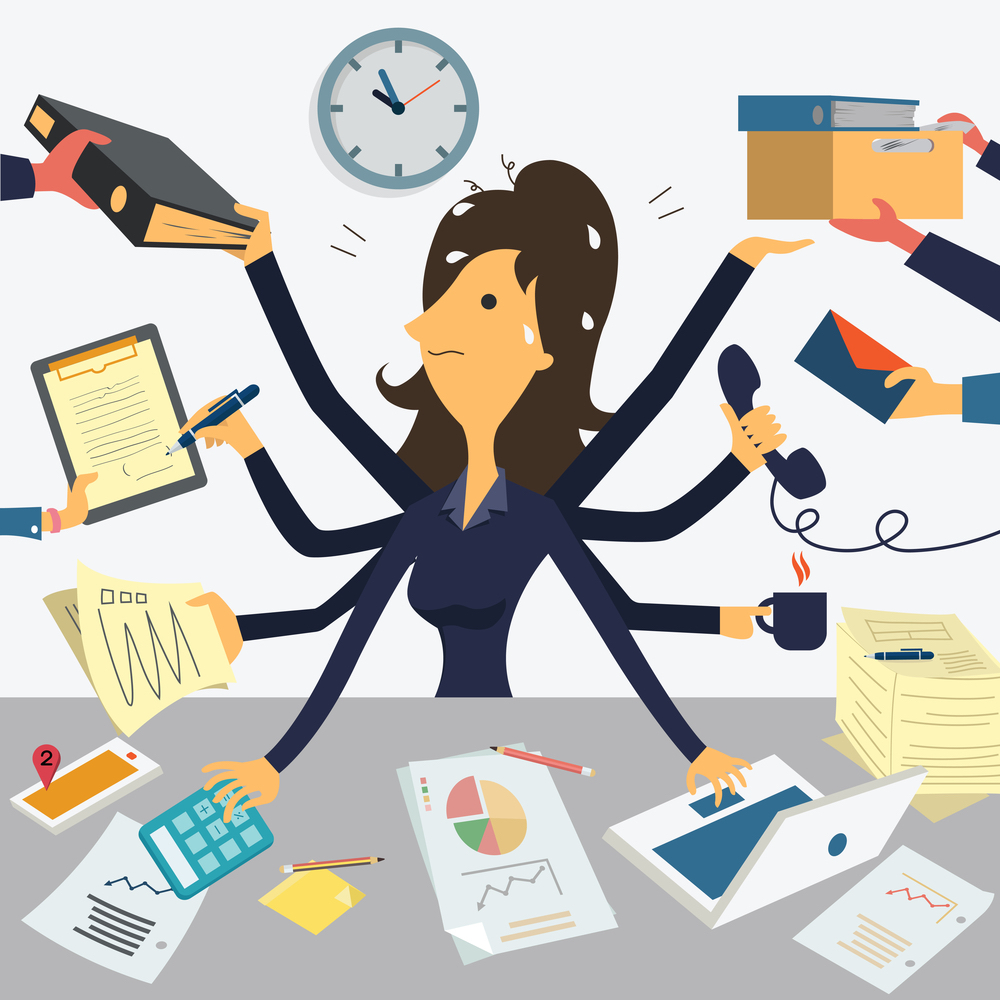By Adriane Weinberg, An Organized Approach, (215) 540 9401

Let’s admit it. We Americans have Too Much Stuff. And we don’t get rid of nearly enough. Reasons from clients include: it feels impersonal donating things to unknown people or they’re saving stuff for their kids (hey, your kids don’t want it). What if there were a way to give things away that feels good? There is! Buy Nothing groups.
The purpose of Buy Nothing Groups is to give away unwanted items, or request items that are wanted, for free. It’s based on the ancient practice of gift economies where people share and pool resources. The Buy Nothing Project started as a social experiment by two friends, Rebecca Rockefeller and Liesl Clark, in July 2013.
Groups are hyper-local and found on Facebook, which was chosen because it’s a free, widely used platform. The rules are simple. From their website, “Post anything you’d like to give away, lend, or share amongst neighbors. Ask for anything you’d like to receive for free or borrow. Keep it legal. No hate speech. No buying or selling, no trades or bartering, we’re strictly a gift economy.” Easy enough.
These ladies couldn’t have imagined that their little experiment would become a worldwide movement with 1.3 million users in 28 countries and 6,000 volunteers!
For more information or to find a Facebook group in your area, visit https://buynothingproject.org/. Rebecca and Liesl are currently crowdfunding to create a social media platform and app (https://www.soop.app/) to enhance “the power of shared abundance.” Their recently published book, The Buy Nothing, Get Everything Plan: Discover the Joy of Spending Less, Sharing More and Living Generously, shows people how to be a smarter shopper and get rid of things without adding to landfills.
On a related note, Buy Nothing Day is the Friday after Thanksgiving, aka Black Friday. It’s an international day of protest against overconsumption. This year, it’s Friday, November 27, if you’d like to participate.
I’m not anti-stuff. In fact, I have lots of stuff. My house isn’t cluttered, there’s ample space and I can find anything in seconds. For several years, a few years ago, I avoided shopping because I have what I need and much of what I want. I have enough. I don’t buy much anymore, unlike when I was acquiring things in my 20s, 30s and 40s. As a professional organizer, I know it’s about moderation and space. Everyone should do what feels right for their situation.
Many people lost jobs due to COVID-19. Buy Nothing Groups are a great way to save money. Or help neighbors save money by gifting things to them. Maybe you’ll be inspired to check out a Buy Nothing group.

While helping clients organize their papers, they express concern that they’re doing something wrong when handling them more than once. What they’re unknowingly asking about is the OHIO (Only Handle it Once) rule.
Keep in mind, though, that OHIO is a guideline, not meant to always be applied. The intent is to Only Handle It Once, or as few times as necessary to completion.
Scenario 1
Scenario 2:
We don’t stop to think about how many times we handle the same papers — and how much time we waste. A lot!
Here’s a favorite productivity tip from David Allen’s book, Getting Things Done. His Two-Minute Rule states that if it takes less than two minutes, do it now. That doesn’t mean two minutes exactly, but just a few minutes to complete quick tasks. Brilliant!
Contact a pro organizer if you want to learn how to get more done in less time.
© 2019 Adriane Weinberg. All rights reserved.
Why are some people able to get more done in less time? What’s their secret?
No secret. They’ve mastered how to manage their time.

What is Time Management?
Simply put, it means to effectively manage your time to do what needs to be done on time. Most people feel overscheduled, do not plan their time well, spend too much time on unimportant tasks and so on. It’s not a time issue; it’s an organizing issue. In most cases, proper time management is lacking.
“I definitely am going to take a course on time management…just as soon as I can work it into my schedule.” ~ Louis Boone
To maximize productivity, you must know and apply effective time-management systems and tools that work for you. Here are some proven ways:
Organization
If you’re disorganized, you cannot maximize your productivity. Your first step is to get organized.
Eat That Frog
“The first thing you do each morning is to eat a live frog.” ~ Mark Twain
The “frog” is your toughest, most important task. Twain’s point was to get it done first each morning and the rest of the day should be easier.
Task Batching
This means scheduling time to do similar tasks. For example, reply to emails from 2:00-3:00.
Active v. Productive
There’s a huge difference between busy and productive.
“Do not confuse motion and progress. A rocking horse keeps moving but does not make any progress.” ~ Alfred Montapert
I recommend watching this three-minute video, which nails it. It’s meant for older folks with ADHD but everybody can relate.
Multitasking
Forget it. According to Forbes.com, 98% of us don’t multitask well. We’re actually just shifting between tasks which takes our brain time to constantly refocus. Studies show multitasking can reduce productivity by as much as 40%. However, I say it works when one task is mindless and your focus is on the other one.
Procrastination
Delaying inhibits productivity. Be intentional, positive and focused on your objective.
To-Do List
Use one! It’s critical to note tasks in one place, on paper or your device, so you don’t forget.
To begin, implement one or two tips. Practice until they’re routine. Repeat. There’s no shortcut but, over time, you’ll accomplish more in less time. That means more time to spend at work, with family, to read a book, do yoga or on whatever you want!
© 2019 Adriane Weinberg. All rights reserved.
January is a time of beginnings – new year, new resolutions, new choices. Make 2018 YOUR year to conquer clutter chaos and gain control of your house!
I define clutter as anything that takes up space without serving any real purpose in your life. That simple statement helps my clients decide what to keep or let go. Clutter looks and feels different to everyone. It causes stress and a somewhat-to-completely-overwhelming, chaotic and sometimes unhealthy environment. It’s a daily negative reminder, conscious or unconscious, of tasks left undone.
Over time, storage areas like closets, basements and garages become stuffed. Therefore, things that should be in storage areas overtake living spaces. There are personal costs like stress, time wasted searching for things and money wasted rebuying things you can’t find or forgot you have.
It’s time to reclaim your space. Start with decluttering.
Decluttering is just the first step before organizing takes place. To be organized, among other things you need a strategy as to where everything that remains will be placed, systems that work for you, organizing principles and new habits, all of which work with your situation, personality and preferences, and maintenance techniques.
Some people are held hostage by their stuff. They hold on to things long after they’ve outlived their usefulness due to sentimental reasons, packrat tendencies, monetary value, so-and-so gave it to them or “I might need it someday.” Unused things displace things that are used.
Some of my clients have 30-year-old wedding presents in dusty, never-opened boxes on basement shelves. I ask, “WIll you use it.” “No.” “Do you like it?” “No.” “Can you get rid of it?” “No.”
As an organizing consultant, I know it’s not about just getting rid of things. It’s about the person, not the stuff. Often there are underlying psychological reasons. I dig deeper to help my clients understand WHY they’re keeping unwanted stuff. I offer safe ways to let go without losing connections to things.
Once clutter is conquered, calm replaces chaos and your home reflects how you want to live. Sound amazing? It is! Contact a professional organizer if you’d like help.
I had a life-changing epiphany. It was on May 27, 1978 in the wee hours following opening day of Atlantic City’s first casino, Resorts. My then-boyfriend and I were there until the casino closed (pre-24-hour operation). We drove around Atlantic City, off the main roads. I was stunned to see truly deplorable living conditions. I felt guilty about all I had and didn’t fully appreciate.
My epiphany? I would never again complain about things I didn’t have – I had everything I needed and much of what I wanted.
I’ve kept that promise. In fact, a few years ago I stopped buying stuff I didn’t need and avoided shopping centers. Maybe it was due to organizing and downsizing other people’s stuff, sometimes massive amounts. Or because I didn’t want more stuff. Probably both, plus Pareto’s 80/20 Rule: We use 20% of our things 80% of the time.
I don’t mean to sound like a scrooge. If you’re OK with your amount of stuff, have enough space, can afford and enjoy buying new things, and your life is not negatively impacted, that’s great!
But if you feel as I do, walk around your house, take a mental inventory and ponder these questions before buying more things.
Now when I shop for something new (who doesn’t like new things sometimes?), I focus on my goal and try to avoid aimless browsing – you know, how guys shop. I discovered it’s liberating being free from societal and marketing pressures to buy more, or the latest whatever, to be happy. You too can buck the gotta-have-more, gotta-have-it-now mentality with a change in perspective. You can do it yourself or with help from an organizing consultant.
I am truly happy with the many beautiful things I own. I have more than some and less than others. But I have more than enough. I’ll never own an Aston Martin and I’m OK with that!
 Is the morning of the first day of school a frenetic, crazy time at your house? How about the next few days? Whether your child is elementary- or high-school bound, it’s hard to get her up and moving in the morning and to bed at a reasonable time. Once she’s awake, then comes figuring out what to wear, a frantic search for the missing shoe because another pair isn’t acceptable, followed by general chaos that causes wasted time, drama and stress!
Is the morning of the first day of school a frenetic, crazy time at your house? How about the next few days? Whether your child is elementary- or high-school bound, it’s hard to get her up and moving in the morning and to bed at a reasonable time. Once she’s awake, then comes figuring out what to wear, a frantic search for the missing shoe because another pair isn’t acceptable, followed by general chaos that causes wasted time, drama and stress!
It doesn’t have to be this way. With some simple planning and organization, things can run smoothly. Whether your child is starting school for the first time or a returning student, these tips will ease the transition from summer to school.
Being organized makes life so much easier. As one of my favorite clients said upon completing his project, “Peace through organization.”